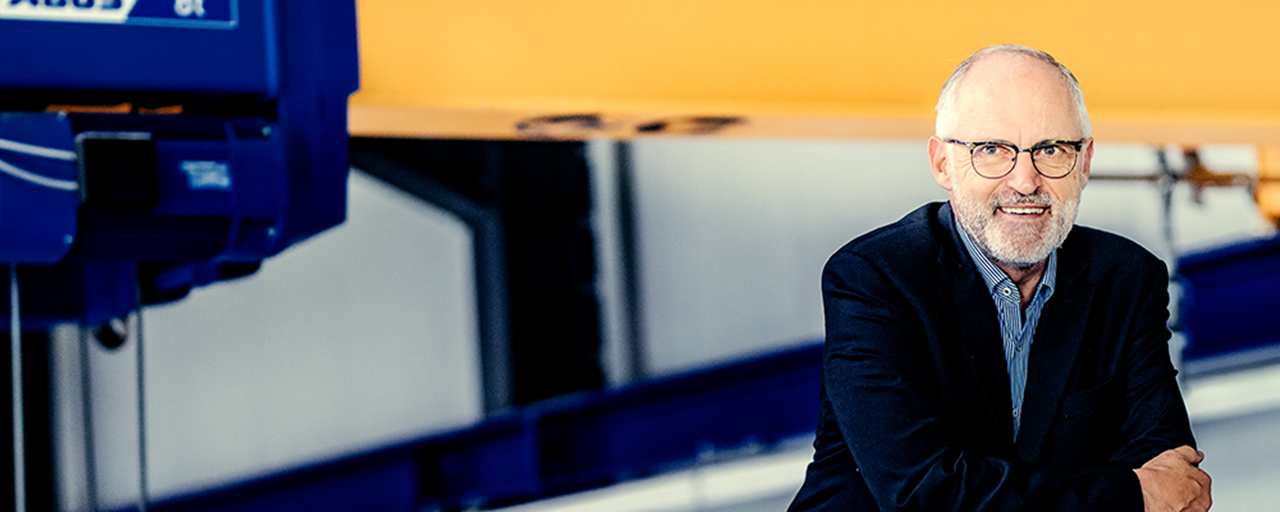
Christoph Seeßelberg
With most crane tracks in the western world installed in the 1960s and 1970s, there is a huge need for upgrading. While not known for much glamour, whole production lines can come to a standstill if cranes stop functioning. The most frequent problem is inadequate joints and loosening bolts.
You’re a renowned expert on crane tracks, and you’ve had an esteemed career in structural engineering and steel construction. Where has this taken you?
As an officer in the German Army, I studied Civil Engineering at the University of the German Army in Munich. In my spare time, I prepared my thesis. After leaving the Military, I finished my studies with a Doctor of Engineering (Dr.-Ing.) at RWTH Aachen University.
My first job was with the German aerospace company Dornier, which was an unusual place to be for a civil engineer. But I worked on durability and resilience in dynamic constructions, such as bridges and windmills, and then I got hooked on crane tracks. For the last 26 years, I’ve been teaching and researching at the Munich University of Applied Science, writing books, and advising private companies about crane tracks.
What is so fascinating about crane tracks? At first glance, it doesn’t appear to be cutting-edge technology.
You’re right. At first sight, crane tracks are pretty boring and not very “sexy”. Essentially, there’s just a steel beam reaching over one, two, or more fields. But if you look closer, it’s really thrilling. It’s all about critical infrastructure and ensuring long-term security and durability.
Recently, I advised a German company in heavy industry. They reported a loss of one million euros every day that the crane track was down, and they needed to keep it working while at the same time investing in new cranes. So we found a way to keep the crane running by using a “minimally invasive” parts replacement. It was a fascinating project.
It’s just one example of how essential the crane tracks are for almost every industrial sector. Be it heavy industry like steel production, automotive assembly, or light mechanical industry, lifting heavy components is essential.
I like to compare it to an artery. When it’s clogged, the production breaks down. When it happens in a blast furnace, it’s a catastrophe. It's one of the most underestimated dangers in many industries — nobody is interested as long as they function.
Many installations around the world are aging. How serious is this problem?
In Germany, more than 50 percent of the crane tracks were installed in the 1950s, 1960s, or 1970s. By now, they exceed their technical lifetime of around 25 years by far and need regular maintenance and upgrading. So the question is, should they be replaced, or is it possible to save them for another couple of years while planning for a replacement?
We must be aware that the industry has changed a lot. The lifting loads are getting heavier. And today, the technical norms before 1980 are not adequate anymore. It’s a real problem. But I wouldn’t say it’s a ticking bomb because there are solutions.
What are the primary deficiencies?
Every crane track which is older than 25–30 years will have defects. The main problems are cracks in the steel construction and loosened bolts, or even empty bolt holes. In regular inspections, problems with joints and bolts are the most frequent problem. In my experience, they account for 80 percent of the reported faults. So it’s a significant problem.
Unfortunately, the German norm regulating the inspections, the VDI 6200, is not very well known and not consistently applied. If we don’t use the norm, there’s a risk that problems get so massive that components fall and cause severe accidents.
When it comes to securing joints, what is your preferred solution?
With preloaded bolts, we need to ensure that they don’t lose the preload. A perfect way to do this is to use Nord-Lock wedge-locking washers. But regrettably, I receive almost daily proposed solutions with lock nuts or pall nuts, which are entirely unsuitable. This is because many construction engineers are not familiar with dynamic load.
But cranes always produce dynamic load, which means that even perfect preload will lose preload over time. It’s amazing how fast this happens. Even I was shocked when Nord-Lock demonstrated the different locking solutions at the Munich University of Applied Sciences. The lock nuts and pal nuts loosened within seconds when exposed to vibrations. Only the wedge-locking washers remained tightened.
Do you foresee any significant developments in the future of crane tracks?
I expect changes in the electronic control systems of cranes, making it possible to adapt to different loads at various parts of the crane tracks. This would make it possible to use older crane tracks longer. Another trend is that we’re moving from S235 steel to S355 steel. Finally, the trend is to use wider flange profiles for the beams, which improves stability.
In your view, what is the role of future engineers?
Engineers tend to focus on purely technical matters without asking what it means for society. We must take a broader view and think outside the box. For example, at Munich University of Applied Sciences, the students must study at least two subjects without any relation to engineering topics. Sometimes people deride this as unnecessary, but as engineers, we must get more sensitive and more responsible.